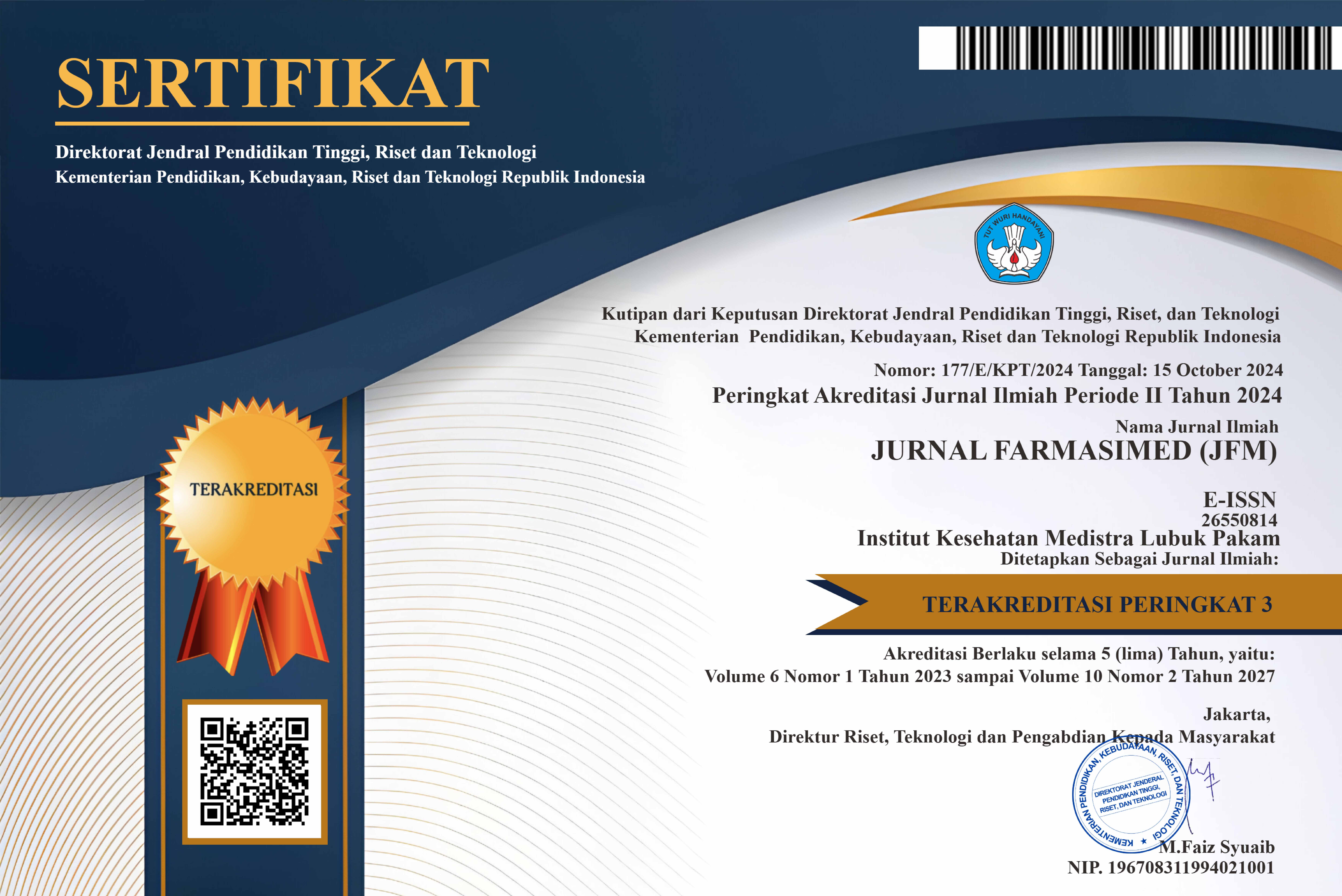DRP EVALUASI DRUNG RELATED PROBLEMS (DRPs) ANTIBIOTIK PADA PASIEN PNEUMONIA RAWAT INAP ANAK RUMAH SAKIT UMUM DAERAH DELI SERDANG
DOI:
https://doi.org/10.35451/jfm.v3i2.574Keywords:
Drung Related Problems (DRPs), Antibiotics, PneumoniaAbstract
Background: Infection is one of the top ten diseases in Indonesia, so that antibiotic therapy is quite high. The increasing use of antibiotics may lead to an increase in the use of irrational antibiotics. Drug Related Problems (DRPs) are events that are not expected from the patient's experience or are suspected to be due to drug therapy so that they have the potential to interfere with the desired healing success.
Objective: This study aims to determine the number of occurrences of DRPs which include dosage inaccuracy, namely under and over dose, indication without drug, drug without indication, potential interactions and inaccuracy of drug selection in inpatient pneumonia treatment for children at the Deli Serdang Regional public hospital. In 2019
Method: This study is retrospective in which data is obtained through secondary data in the form of patient medical records for the period January-December 2019 with a cross-sectional study design. The data collection technique was in the form of total sampling, obtained 50 samples that fit the inclusion criteria.
Results: Drung Related Problems (DRPs) research that occurred in the under-dose category of drugs (4.0%), and excessive drug doses (2.0%) and no DRPs (94.0%). This shows that the role of pharmacists is important in monitoring patient drug therapy to minimize the occurrence of DRPs.
Downloads
Downloads
Published
Issue
Section
License
Copyright in each article is the property of the Author.

























